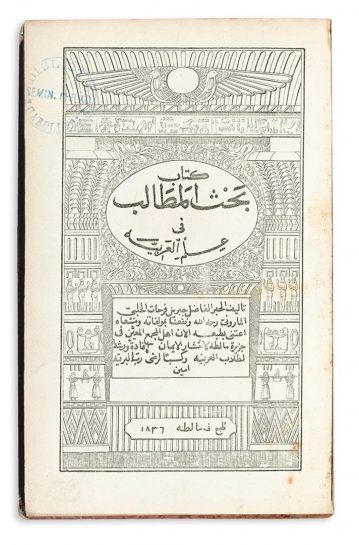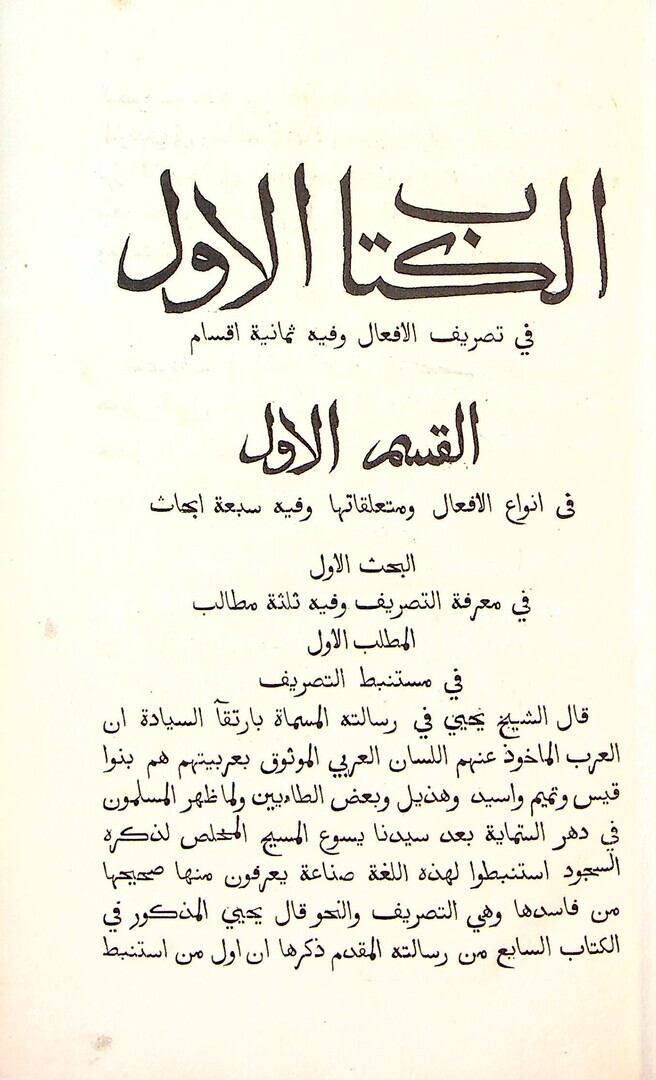Kitab Bahth al-Matalib fi ‘ilm al-‘Arabiyah.
Farhat, Germanus / Gabriel Germanous.
Synopsis
This work was written at the beginning of the 18th century and circulated in a manuscript format until its appearance in print in Malta. Germanous Farhat was a Syrian philologist and poet, precursor of the literary renaissance in the Arab world and Maronite Archbishop of Aleppo (1725-32). Aleppo was one of few Arab cities that retained to some extent their literary tradition by continuing to cultivate it after the Turkish conquest. A certain amount of European influence was added to the Arab literary tradition. A considerable part was played by the opening of the Maronite college in Rome in 1584 and the existence of a large European trading colony in Aleppo; it should be remembered that J. Golious and E. Pococke spent some years there. The influence of the literary tradition was felt in all Christian communities and the figure of the Orthodox Patriarch Makarius al-Halabi is only one example of many.
The son of a prosperous family, Germanous Farhat had a good education in Aleppo. He learned Latin and Italian in addition to his native tongues of Syriac and Arabic. In 1693 he became a monk, travelled to Jerusalem and later went to Lebanon where he was under the special instruction of the famous Maronite Patriarch Stephan al-Douwaihy (1630-1704). He travelled to Rome, Sicily and Malta. While he served as the Archbishop of Aleppo, he collected a fine library of manuscripts. He was the central literary figure of the period.
As a philologist Farhat recognised the need for writing literary textbooks for his countrymen, as it would facilitate the study of Arabic for them in the changed circumstances. He wrote textbooks in almost all fields of lexicography, grammar and rhetoric, some of which have not yet entirely lost their popularity in Christian circles in Syria. Although they are to an extent based on Arabic tradition, in particular cases, especially in grammar, one can detect a degree of European influence, especially of the Roman Maronite tradition and the School of Erpenius. He wrote several lexicographical works, especially the dictionary Bab al-’I’rab ‘an Lughat al-’Arab, which was finished in 1718. (From the Encyclopaedia of Islam).
This work, which was printed by Malta press, is considered extremely rare. The famous scholar Ahmad Faris al-Shiyaq edited some of the publications of the Malta press. The press, which was established by Protestant missionaries in the first half of the 19th century produced only 111 titles, the majority were in Arabic with a few Ottoman Turkish texts. Most of the books were religious texts or on the history of the Church but there were also a few texts on grammar.
Bibliographic reference: Graf III, 417.








